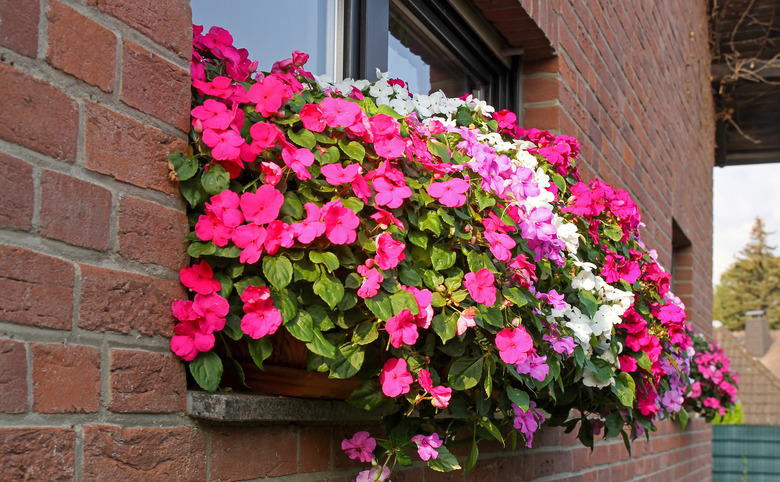How To Help Impatiens That Are Not Blooming
We may receive a commission on purchases made from links.
There are several ways to help your impatiens (Impatiens spp.) when they're failing to bloom, which is good to know because planning a flower garden can be a lot of work, whether it's an elaborate and expansive stretch of flower-covered ground or a short string of plants running along your front walk. Even seeing one container on your porch failing to show color can be a disappointment after all the planning, digging, watching, and waiting. Since the color show produced by impatiens is always worth the wait, simply follow some basic care tips and hang in there. Impatiens are actually cooperative, easy-care flowers, and they'll be blooming in no time.
Know How to Water Them
Know How to Water Them
Impatiens love moisture and should be watered frequently. Those grown in containers will need even more water. SunPatiens and New Guinea impatiens that can take more sun will need more water than the shade-loving garden impatiens.
Water potted impatiens and impatiens in hanging baskets daily, making sure there are drainage holes in the containers. Water bedded plants when the top 1 to 2 inches of soil are dry.
Use Quality Soil and Fertilize
Use Quality Soil and Fertilize
If you give serious thought to your soil conditions before planting, you can nip blooming problems in the bud. Don't plant your impatiens in just any kind of soil. Regardless of the type of impatiens you've chosen, they should be planted in rich, moist, well-draining soil. To promote nutrient absorption by roots, impatiens used in containers should go into a good quality, soilless potting mix that includes generous amounts of perlite, compost, and humus. For bedded impatiens, add plenty of compost to the soil and take mulching seriously to help promote moisture retention and soil temperature regulation.
It's important to fertilize the soil regularly throughout the growing season, but excessive application of nitrogen will promote growth of the foliage and not the blooms. Blooming is also held back by an overall lack of nutrients, including potassium, phosphorus, and nitrogen. To promote blooming, use a water-soluble fertilizer that contains more phosphorus than nitrogen and apply it monthly.
Assess the Light They're Getting
Assess the Light They're Getting
Sun and shade requirements will vary depending on the type of impatiens you plant. Blooming can be affected by too much sun as well as by too little. The older type of impatiens, sometimes referred to as "old-fashioned" impatiens or "garden" impatiens, do better in partially shaded areas with minimal afternoon sun exposure. They will grow in full shade, but they won't show robust blooming. Two to four hours of sun is best for this type.
New Guinea impatiens do best with four to five hours of eastern-exposure morning sun and afternoon shade, and SunPatiens can handle full sun to part shade — not full shade.
